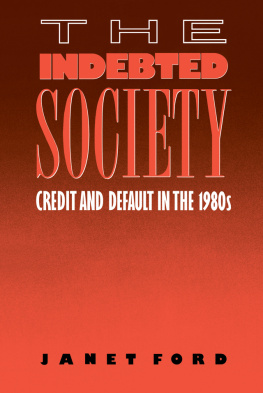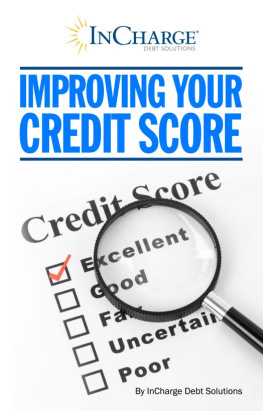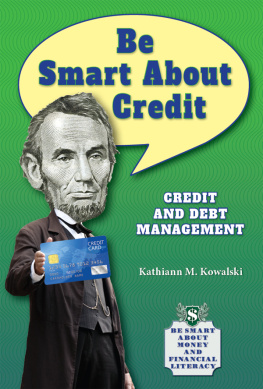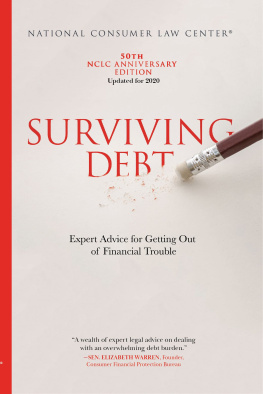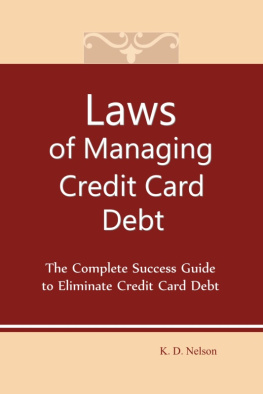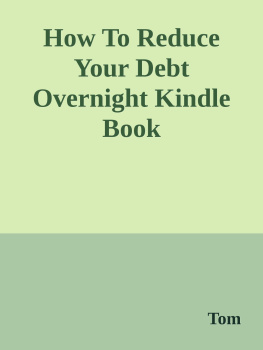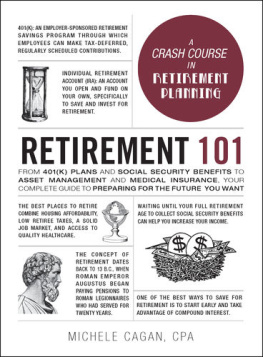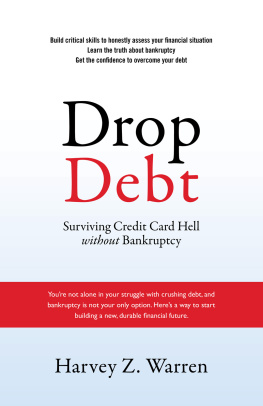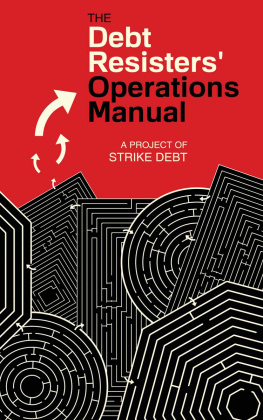Preface
ELENA: | Has there ever been a time when you werent sure how you were going to pay your credit card bill? |
JOE: | No. I think Ive gotten right up against the edge of that. The closest Ive gotten is like, having to really not eat for two days, you know, to pay this bill because I know Im gonna get paid Friday. So, its always been something where the problem will alleviate itself within the next seventy-two hours. But Ive gotten that close. |
When things go wrong in America, we are often on our own.
At the time Im writing this sentence, the wait list for one night in a bed in a San Francisco homeless shelter hasnt dipped below one thousand people in over a year.
And although by law youll get medical care at the emergency room even if you dont have enough money, that assurance doesnt apply to the rest of the hospital. If you get cancer or diabetes and you dont have insurance, or cant afford to meet your deductible, nothing in America guarantees a doctor will see you, or that youll get your prescriptions filled.
Nothing in America guarantees that youll have the cash you need to get your car out of the impound lot if it gets towed, or that youll be able to pay your rent if your boss stiffs you on your paycheck.
This is the world in which Americas lenders operateboth the Fortune 100 companies like JPMorgan Chase and Citi, and the more fragmented family of specialty lenders like Ace Cash Express, OneMain Financial, Credit One, Merrick Bank, and CashCall.
These companies say, Well help you ... for a price, when nobody else offers help at all. Every action these lenders take is seemingly justified by their borrowers lack of alternatives: after all, whats worseto gouge the needy or to ignore their needs completely? High-interest debt is accrued by the unemployed, and by the working poor, desperate to avoid material hardship. But high-interest debt is also accrued by middle-income and high-earning people, sometimes accrued on wants, and sometimes on needs, sometimes after great deliberation and planning, sometimes impulsively, and sometimes by people struggling with addiction. Ive talked to people around the country about their debt, and sometimes they are glad they borrowed money, sometimes they arent, and often, theyre not sure.
The price charged for all these loans is substantial. In 2018, more than 100 million Americans paid a total of $143 billion in interest and fees on credit cards, payday loans, title loans, and pawn shop interest, a cost of $1,184 per borrower per year. The vast majority of this interest88%was paid to credit card companies. Credit card borrowing is not a small part of the American economy; it is central to the economic lives of roughly half of American adults.
I worked at one of the countrys biggest consumer lenders, Capital One, for five years, eventually taking charge of the companys revolver proactive credit limit increase program. That means I managed the analysts who, by algorithm, decided which already-indebted people would get the chance to take on more debt. I saw the inner workings of the industrys well-oiled debt machine: a system of experimentation, product design, marketing, and underwriting practices engineered to push those Americans who could be pushed into as much debt as they could be pushed into, without, ideally, pushing them over the edge into default. And, as Ill explain, this industrys machine doesnt require the existence of corporate tycoons who wear Monopoly Man hats while they grind the faces of the poor into the dirt. The story of consumer debt in America isnt about a few bad people breaking laws and telling blatant lies, but, rather, about the market, political, and social forces that allow the machine to operate in plain sight. Those reaping the profits get the chance to sleep peacefully.
In Delinquent: Inside Americas Debt Machine, Ill take you on a journey through the open-office floor plans of glassy skyscrapers, to the courtrooms where judges rule that lenders are free to garnish parents paychecks, to street corners in Detroit, to kitchen tables in Sacramento, and through my own journey as a banker-turned-journalist trying to grapple with a few haunting questions. When is access to credit a good thing, something to protect and promote, and when is debt a harmful thing that sets American families back? And can we create a lending system that continues to make credit available for families that need it, without pushing people into crushing debt?
There are plenty of people who suggest a better system isnt possible. On the right, you have defenders of the financial sector, who insist that banks are barely scraping by, charging the bare minimum in interest. These voices suggest that any attempt to rein in industry excesses will just make it harder for struggling families who need loans to get them. On the left, commentators are pushing back against decades of misleading rhetoric that claims only irresponsible, or lazy, or stupid people struggle financially. To create a strong counterargument, these commentators insist we hold as given the proposition that all financial decisions made by the working class were absolutely the perfect choice given the circumstances.
But clinging too hard to this assumption leads us to a grim (and inaccurate) conclusion: Americans needed to borrow exactly the amount of money they ended up borrowing, and, therefore, the best we can hope for is a discounted price on all that crushing debt.
And across the political spectrum, advocates, everyday people, and policymakers frequently assume that access to credit, by and large, is a good thing. They push for more lending (and, therefore, more debt) to historically excluded communities, without always reckoning with what those larger debt burdens will mean for the borrowers. People who believe they are fighting the banks often, without realizing it, take as given a pro-bank precept: credit is, essentially, good.
Ill make two main arguments in Delinquent that together explain why a more humane lending system is possible, without ignoring the basic financial realities constraining banks and families.
The first argument Ill make is that Americans come to regret a huge proportion of the principal of the debt that they borrow. The problem isnt just that prices are too high; its that borrowing money was never in the families best interest in the first place. As Ill show in Part I of Delinquent, Americans are induced into unnecessary debt through bank marketing, product design, and customer management strategies that exploit common weaknesses in how we think about money. The amount of consumer debt isnt driven by the amount of money consumers need to borrow: its driven by how much money the banks have chosen to lend. And Ill argue that effective consumer protection needs to push back against the strategies banks use to tempt American families into unproductive debt, rather than just regulating interest rates and fees. Ill call this the principal argument, that Americas debt machine leads the country to borrow too much money. Importantly, debt can be a crushing burden even at a 0% interest rate. Chapter 1 takes a look at the United States prior to the introduction of credit cards, and before most Americans held any consumer debt. Chapter 2 examines the historical conditions that gave rise to mass indebtedness in the second half of the twentieth century. Unlike some authors that attribute the rise in consumer debt to stagnant wages or a rise in the cost of living, I make the supply-driven argument that legal and economic events increased the profit margin of consumer lending, and, therefore, made banks more eager to peddle debt, irrespective of what was in the best interest of ordinary families. Chapter 3 takes a deeper look at who has credit card debt in America: disproportionately Americans between the ages of forty-six and fifty, near the peak of their income, who have had credit card debt continuously or intermittently throughout their adult lives. Credit cards, as they are most commonly used, arent a short-term bridge out of a bad situation; theyre an anchor around the ankles of families who otherwise had a fighting shot at economic stability. Chapter 4 explores the fact that credit card debt falls during recessions and rises when the economy is doing wellit fails to be a buffer against economic insecurity, and, in fact, compounds insecurity. Chapter 5 takes a closer look at the specific tactics that banks have engineered to encourage indebtedness, many of which, Ill argue, should be more tightly regulated.


